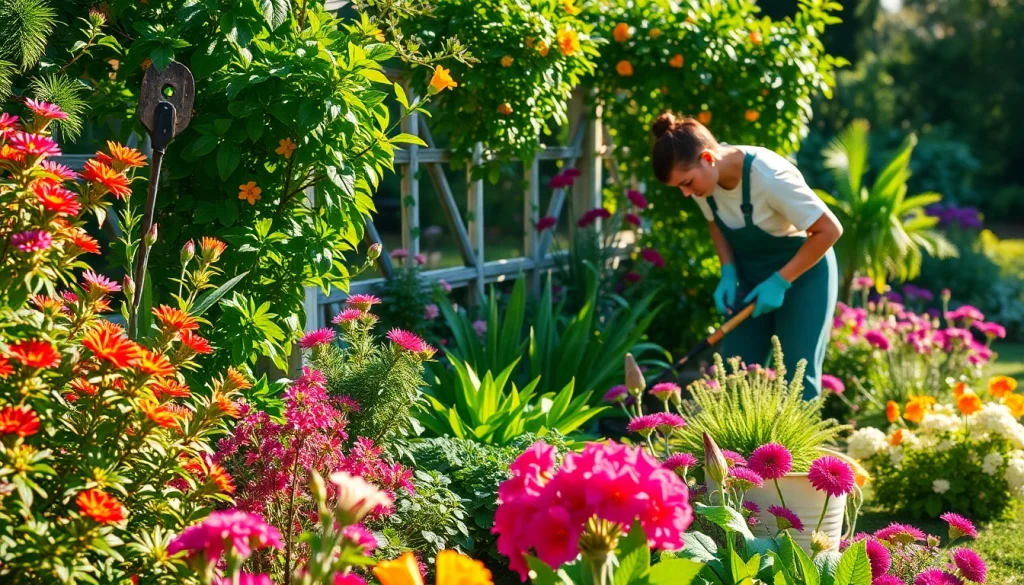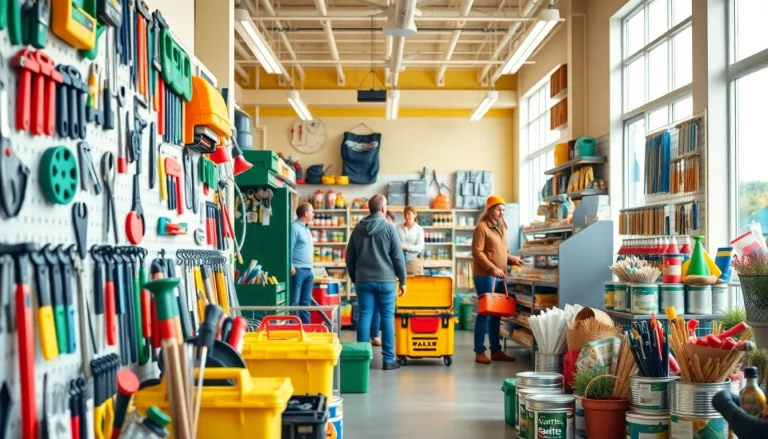
Understanding the Importance of Garden Maintenance Services
Maintaining a beautiful and healthy garden can be a fulfilling task, yet it often requires a level of expertise, time, and effort that can be daunting for many homeowners. This is where garden maintenance service providers step in, offering tailored solutions that not only enhance the visual appeal of outdoor spaces but also ensure their longevity and health. Understanding the multifaceted importance of these services can help homeowners make informed decisions that benefit their gardens and properties in both the short and long terms.
Benefits of Regular Maintenance
Regular garden maintenance presents numerous advantages, from aesthetic improvements to ecological benefits. Here are key points to consider:
- Aesthetic Appeal: A well-maintained garden enhances the overall appearance of a property, contributing to curb appeal and the enjoyment of outdoor spaces.
- Improved Plant Health: Routine care such as pruning, fertilizing, and pest control ensures plants remain healthy, vibrant, and free from diseases.
- Increased Property Value: Properties with well-maintained gardens often command higher market values, attracting potential buyers and increasing resale opportunities.
- Environmental Benefits: Healthy gardens contribute to biodiversity, improve air quality, and support local ecosystems.
- Time Efficiency: By hiring professionals, homeowners can save time and effort, allowing them to enjoy their gardens without the burdens of maintenance.
Common Services Offered by Professionals
Garden maintenance services can encompass a variety of tasks tailored to meet the specific needs of a garden. Common services include:
- Lawn Care: Regular mowing, fertilization, aeration, and weed control to create a lush, green lawn.
- Landscape Design and Installation: Creating aesthetically pleasing and functional outdoor spaces by selecting suitable plants, hardscaping, and layout plans.
- Pest and Disease Management: Implementing strategies to control pests and diseases that may threaten plant health, often using environmentally friendly methods.
- Seasonal Clean-Up: Removing debris, leaves, and dead plants to prepare gardens for the upcoming season.
- Irrigation Services: Installing and maintaining irrigation systems to ensure adequate water supply for plants.
How Maintenance Impacts Property Value
Regular and professional garden maintenance has a direct correlation with property value. A well-kept garden not only shows potential buyers that the property has been cared for but also minimizes future repair costs associated with neglected landscaping. Poorly maintained gardens can detract from a property’s overall appeal, leading to lower offers on the market. Factors that influence property value include:
- Visual Impact: Attractive gardens create first impressions, significantly influencing buyer perceptions.
- Functional Spaces: Well-maintained outdoor areas provide additional usable space, adding value to homes.
- Community Standards: Keeping gardens well-maintained contributes to neighborhood aesthetics and standards, which can, in turn, elevate property values in the area.
Choosing the Right Garden Maintenance Service
Selecting the right garden maintenance service is crucial for ensuring that your garden thrives. The decision should be based on various factors that ensure you choose a service aligned with your specific needs and expectations.
Key Factors to Consider When Hiring
When contemplating hiring a garden maintenance service, consider the following factors:
- Experience and Expertise: Look for companies with a proven track record and industry experience. Professionals who understand local plant species and regional climate conditions will better cater to your garden’s needs.
- Services Provided: Ensure the company offers the specific services you require, whether it’s one-time clean-up or regular maintenance.
- Licensing and Insurance: Verify that the service provider is licensed and insured to protect against potential liabilities arising from accidents or injuries on your property.
- Availability: Determine whether they can accommodate your schedule and meet your garden’s seasonal requirements.
- Personal Approach: Choose a service provider willing to understand your vision for your garden, ensuring they respect your preferences and values.
Asking the Right Questions
To gauge whether a garden maintenance provider is the right fit for you, it’s important to ask the right questions. Consider these inquiries:
- What specific services do you offer, and how are they tailored to fit my garden’s unique needs?
- Could you provide references or testimonials from prior clients?
- How do you plan to approach ongoing maintenance and communicate with me throughout the process?
- What are your pricing structures, and do you offer any packages or discounts for regular services?
- What types of equipment and techniques do you use, and are they environmentally friendly?
Reading Reviews and Testimonials
Reviews and testimonials can serve as a window into the experiences of previous clients. Take the time to:
- Research the company on various platforms, including their website, Google, and social media.
- Look for both positive and negative reviews to get a balanced understanding of their reputation.
- Pay attention to recurring themes in feedback—this can indicate consistent strengths or weaknesses of a service.
Essential Tools for Effective Garden Maintenance
Garden maintenance requires a range of tools to ensure efficiency and effectiveness. Understanding which tools are essential can empower both professionals and homeowners alike.
Must-Have Equipment for Professionals
Professional garden maintenance services typically rely on a comprehensive toolkit to perform their tasks efficiently. Key equipment includes:
- Lawn Mowers: Essential for maintaining grass length and health.
- Trimmers and Edgers: To provide a tidy finish along edges and beds.
- Shears and Pruners: For trimming shrubs and trees to promote healthy growth.
- Blowers: To effectively clear leaves and debris.
- Spreaders: For even distribution of seeds, fertilizer, or pesticides.
Maintenance Tools for Homeowners
Homeowners can benefit from basic tools that facilitate effective garden upkeep, including:
- Hand Tools: Trowels, hand rakes, and weeding tools for easy garden work.
- Watering Equipment: Hoses or watering cans to ensure plants receive the correct moisture.
- Protective Gear: Gloves and knee pads to safeguard against injuries during gardening.
- Garden Carts: For transporting tools, plants, and debris around the yard.
How Technology Enhances Efficiency
Advancements in technology have significantly transformed the field of garden maintenance. Key innovations include:
- Robotic Lawn Mowers: These automated devices can mow lawns with minimal human intervention, saving time and labor.
- Irrigation Systems: Smart irrigation systems using sensors can optimize water use, promoting healthy plant growth while conserving water resources.
- Garden Management Apps: These tools help track plant health, schedule maintenance tasks, and provide reminders for watering and fertilizing.
Seasonal Care for Optimal Garden Health
Every season brings unique challenges and opportunities for garden care. Understanding the seasonal requirements can ensure that your garden remains healthy year-round.
Spring Preparation and Planting Tips
Spring is a critical time for garden maintenance, as it sets the stage for the growing season ahead. Key actions to take include:
- Clean-Up: Remove debris and dead plant material from the garden to promote new growth.
- Soil Preparation: Test and amend the soil to ensure it has the necessary nutrients for new plants.
- Planting: Introduce annual flowers, vegetables, and shrubs that thrive in the spring season.
Summer Maintenance Practices
During the summer months, the focus shifts to sustaining healthy growth amid heat and potential drought. Consider these practices:
- Watering: Implement consistent watering schedules, especially during periods of drought.
- Pest Monitoring: Regularly check plants for signs of pests and diseases and treat them promptly to avoid infestations.
- Weeding: Keep up with weeding to minimize competition for nutrients and water.
Fall Clean-Up and Winterization Strategies
Fall is a time for winding down the gardening season and preparing for winter. Key activities include:
- Leaf Collection: Remove falling leaves to prevent smothering plants and to deter pests.
- Mulching: Apply mulch to protect plant roots and retain soil moisture over winter.
- Final Planting: Late fall is ideal for planting bulbs for spring blooms, as well as preparing perennials for hibernation.
Measuring the Success of Your Garden Maintenance Service
Evaluating the effectiveness of garden maintenance is critical in ensuring long-term success. Understanding how to measure this success can help in adjusting strategies as necessary.
Setting Key Performance Indicators
To assess the performance of garden maintenance services, consider establishing several key performance indicators (KPIs), which can include:
- Plant Health: Assessing the overall health and vitality of plants within the garden.
- Weed Control: Evaluating the level of weed presence and the effectiveness of control measures.
- Client Satisfaction: Gathering feedback from homeowners regarding their satisfaction with the service provided.
Evaluating the Health of Your Garden
Regular observations and evaluations can provide insights into your garden’s health. Key indicators include:
- Growth Rates: Tracking the growth rates of plants can help in assessing the effectiveness of care provided.
- Visually Assessing Health: Checking for signs of disease, discoloration, or unusual growth patterns.
- Soil Quality: Routine soil testing to determine nutrient levels and make necessary amendments.
Adjusting Services Based on Results
Once evaluations have occurred, it’s important to adjust maintenance services accordingly. Adjustments may include:
- Altered Irrigation Practices: Modifying watering techniques based on plant needs and seasonal conditions.
- Pest Control Adjustments: Changing pest management strategies based on observed pest populations.
- Re-evaluating Plants: Replacing underperforming plants with more resilient alternatives if necessary.






